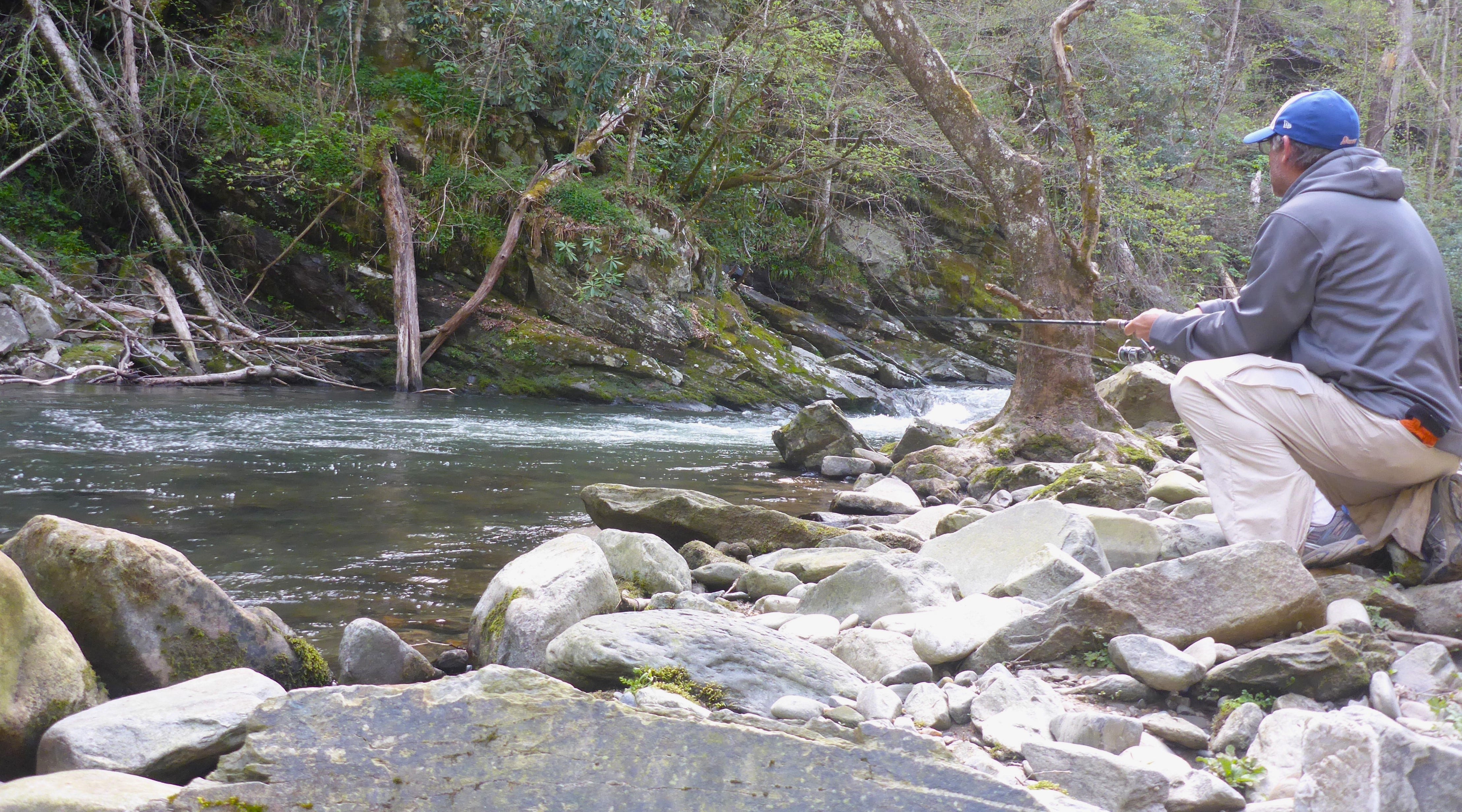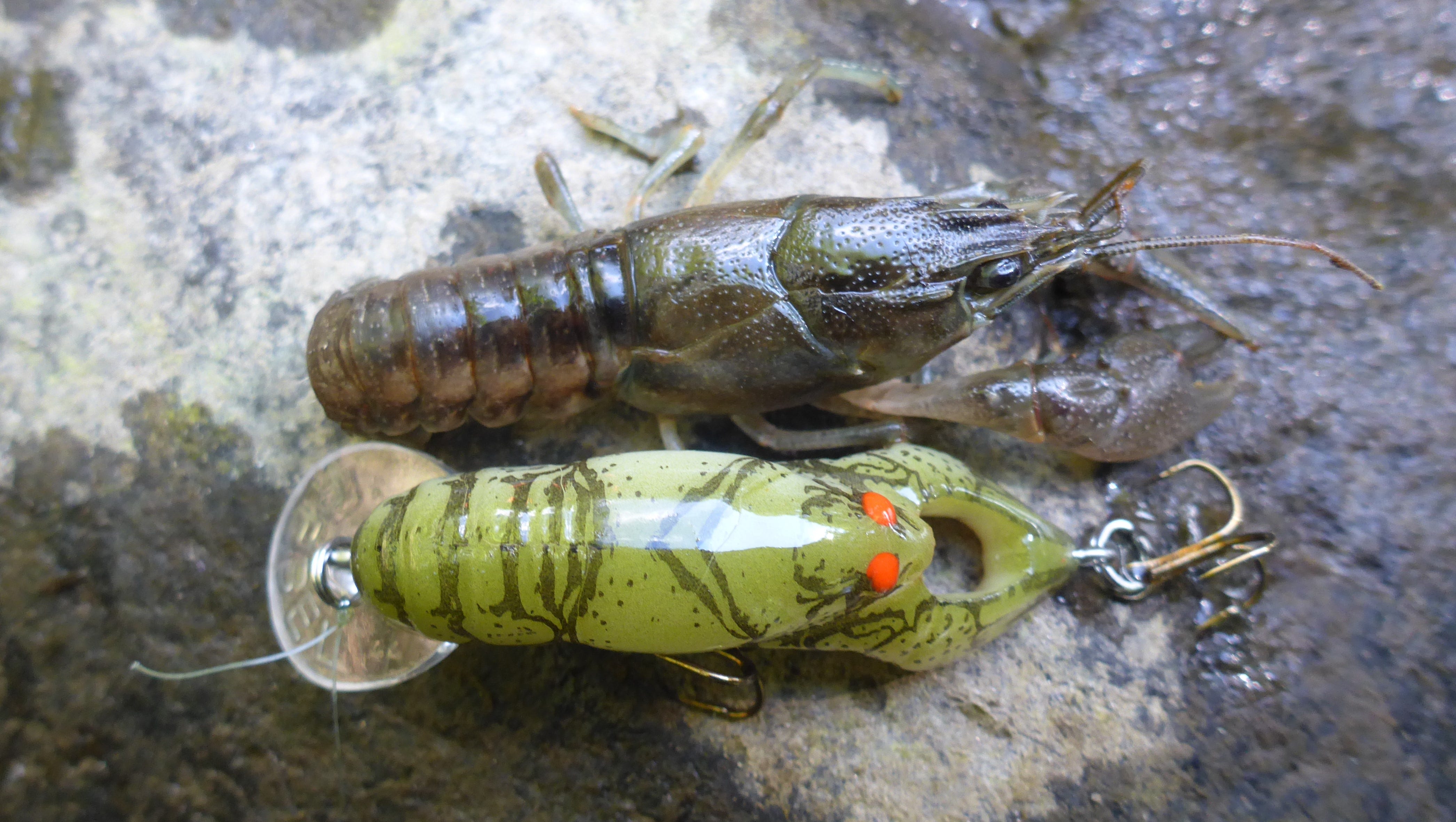- Feb 14, 2024
6 Top Tips for Catching More Trout
From late winter through spring is an outstanding time to catch trout from creeks and rivers. These tricks can turn good fishing into great fishing!


As cold-water fish, trout get active this time of year, commonly serving up great fishing opportunities at times when fishing for other popular kinds of gamefish can be challenging. Late winter and early spring fronts also bring heavy rain that refreshes trout streams and makes the fish even more active.
Trout fishing with spinning tackle and lures is highly effective but gets less attention in articles than fly-fishing and bait-fishing approaches. If you enjoy tying on a lure and wading or walking the banks of a creek or river to fish for trout, these six trips can help you catch more fish during those outings!
Gauge Their Mood


A core decision about the fish’s likely mood and how that should steer your overall approach can make a trout fishing outing. Are they apt to be fussy and selective or in opportunistic ambush mode, grabbing food when they can?
Extra clear water, low flows, bright sunshine, abundant natural forage and heavy fishing pressure tend to make fish fussier, often calling for realistic-looking offerings, smaller baits and slow, natural presentations.
Stain, higher flows, low light conditions, limited available forage and fewer anglers astream put the trout in ambush mode. Larger offerings, bolder colors and faster presentations prompt attacks from fish that don’t want a would-be meal to escape.
The truth typically falls somewhere in between, because not all the influencing factors tend to line up, but if you are intentional about deciphering that mood and strategize accordingly, your entire approach can be more effective.
Play the Current


Current dictates much for stream trout. It delivers food, provides concealment, and influences the way they need to orient to hold position. In streams that don’t have much current, any bit of moving water acts like a magnet, drawing fish. When flows are extra high and most currents are too strong for fish to hold in with a reasonable expenditure of energy, trout pack into eddies.
Carefully consider current, including eddies, seams and areas with faster or slower flow. Then plan your casts accordingly. If you think about the current and its impact, you can figure out where trout are likely to be, how they should be oriented and where food should come from. Armed with that info, you can make certain the fish get their first look at your lure when it is moving through the feeding zone.
Utilize the current as much as possible to do the lure delivery work by angling casts upstream. If the current is too strong to keep up and engage your lure’s action, cast across the stream instead and let the lure swing downstream with a tight or semi tight line so the lure does its dance as it swings downstream and across.
Make Yourself Mobile


One of the best ways to enhance trout catching opportunities is by covering water. A stationary approach banks on finding willing fish in an area. As importantly, stream trout get tuned into anglers, which puts them in shut-down mode for a while. A mobile approach allows you to make more casts to fish that aren’t already tuned in to your presence.
Enjoying stream mobility begins with planning, especially in terms of gear and how you carry it. You don’t need every lure you own. Consider realistic needs and carry gear in small stowable boxes. If you feel the need to evaluate stream conditions, put broader selections in your car and load a couple of small boxes from those after you look at the water. Tote the stuff you need – lures, pliers, water, snacks, etc. – in or attached to either a vest, wader and shirt pockets, or some type of wearable pack. How far you need to venture from the vehicle to cover water dictates the amount of gear and what to put it in. The key is to keep everything wearable, so you don’t have to keep setting stuff down.
Also consider wading requitements and prepare accordingly. In many trout streams, if not most, even if you mostly fish from the edges, being prepared to walk in the streambed when necessary will open access to far more water. If the water is cold or you don’t want to end up soaked, that might mean wearing waders. That said, if I can stand the temperature wading wet, I usually opt for that route because I’m much more mobile when I’m not weighed down by waders.
Remain Undetected


Speaking of casting from banks, that’s a great strategy anytime it allows you to reach where you want to cast. For small, clear streams, in areas where the surface is slick, you might even want to stay a couple of feet back. Trout typically are far easier to catch while you remain undetected, and that is largely within your control.
You seldom need to go into full stalk mode to catch trout, but even a modest measure of stealth can make a major difference in your success rate. Some examples: work from edges, when possible, and from downstream of fish so they are facing away from you; avoid splashy steps and abrupt movements; dress in drab colors; use stream cover and steep banks to aid with concealment; cast past likely fish-holding areas.
Not every situation calls for the same degree of stealth. If a stream is ripping and stained or you’re casting to pockets in a rapid, you probably don’t need to be very sneaky. That said, you’ll never lose out because of too much stealth, and based on my observations, adding a little stealth would benefit many anglers’ catch rates.
Consider Natural Forage


While successful trout fishing isn’t always about matching hatches, it never hurts to be aware of what the trout are eating, and matching forage size, profile, colors or behavior often makes fish more inclined to strike.
It could simply be a matter of fishing a gold spoon instead of a silver one to match colors flashed by minnows you’ve seen in the water or fishing slowly with a jig near the bottom because you’ve noticed several sculpins. However, it could be more specific, like tying on a Moss Crawfish Deep Teeny Wee Crawfish to match the size and color of craws in that stream and reach the right depth.
The key is to be aware of what is in a stream that the trout are eating. Some stuff you might know by history or can learn at a local fly or tackle shop. Other stuff, you learn by peering in the water around you for minnow schools, crawfish or other food stuff; by watching for hatches; by noting what any trout you catch spit up; and by watching for clues, like crawfish shell remnants on rocks.
Show Them What They Don’t See


Angler commonly learn popular local approaches and try to match those strategies with baits they possess. While much can be learned from how others fish a particular location – especially if they are successful – often a better stream strategy is to pay attention to what is popular, and intentionally do something different.
I fish a lot of streams that are very popular with fly-fishermen because of special regulations that only allow fishing with single-hook artificial lures and require all trout to be released. Instead of using finesse jigs or drifting flies under floats (both highly effective trout strategies at times) I'm apt to fish a Rebel Tracdown Minnow or Teeny Wee-Crawfish or a Lindy Quiver Spoon. The trout in these popular waters see endless Hare’s Ears, Pheasant Tails and Woolly Buggers, and most probably have been caught and released more than once on the same. When something with more flash and wobble comes through quickly, they are apt to pounce on it.
On the flipside, if I’m fishing stream where spin fishing with inline spinners and spoon is highly popular, I’m more apt to start with Bobby Garland Itty Bit Swim'R or a Lindy Little Nipper to coax strikes from fish that are used to seeing flashy offerings.
6 Terrific Trout Lures


- Rebel Tracdown Ghost Minnow – A slow sinker that can be used to work the entire water column, the Ghost Minnow has a narrow profile and can be swam steadily for a tight action or jerked to make it erratic and more aggressive.
- Tasmanian Devil – Designed primarily for trolling, a Tassie is also an excellent casting lure for stream trout, especially in the 7-gram size. It has a wide wobble and creates a lot of vibration to help fish find it, and it can be rigged with any type of hook.
- Lindy Rattl’n Quiver Spoon – Although made for ice fishing and mostly marketed to ice anglers, this lightweight spoon has a slow action but sends out plenty of flash, and a single-ball rattle calls in trout and prompts strikes.
- Bobby Garland Itty Bit Slab Hunt’R – This 1.25-inch minnow imitation is ideal for matching a tiny baitfish or providing an ultra-finesse option. It can be fished a small Overbite Sickle Jighead – alone, with a split shot on the line, in tandem with another, or beneath a float.
- Rebel Teeny Wee Crawfish – Few lures have truer cast-crank-catch capabilities or work in a broader range of conditions for trout than a Teeny Wee Crawfish, and it matches important forage in many trout streams.
- Rooster Tail – A classic lure for many types of fishing, a Rooster Tail provides just the right amount of flash to draw in trout and looks like an easy meal. The 1/24- and 1/16-ounce sizes are extra good for most stream trout situations.



